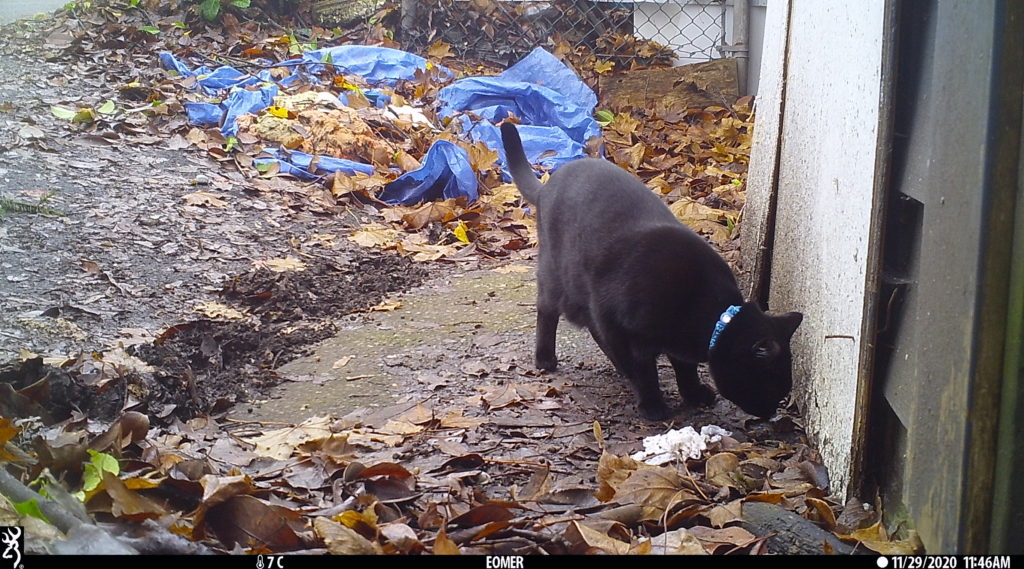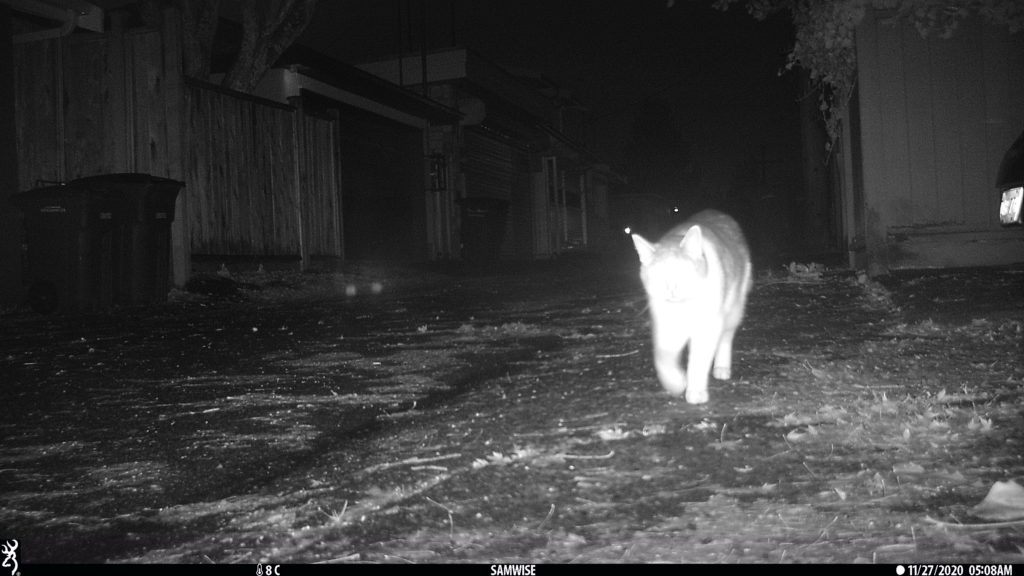Vancouver Cat Count
Camera monitoring of outdoor cats was approved for the winter!
Thanks to our partners and funding from Environment and Climate Change Canada, we have been given the support to continue the Vancouver Cat Count into the winter season. This is extremely exciting as it will allow for a comparison between the summer and winter seasons. We will now be able to assess the extent of cat predation risk for birds across seasons.
As winter arrives, many birds migrate south to warmer climates. With seasonal bird migration in place, one can expect the level of cat predation on birds to be lower compared to summer. With its mild winter weather, Vancouver is a unique place that supports a higher density of ground foraging birds during the winter relative to other cities and provinces which makes it important for us to continue monitoring roaming cats over the next few months.

Winter phase has started on Nov 16, 2020
We were able to start the project back up again, fairly quickly, thanks to our working network of volunteers, citizen scientists, business owners and city council collaborators. One of our goals for this next phase of winter monitoring is to replicate as many sites as possible from our summer deployments.
Each location will be monitored for 3 weeks before being moved to a new location. We have just wrapped up the first deployment period and have already started with the second phase of monitoring.

In the first 3 weeks of winter monitoring, we have already collected over 100,000 photos. Of those, we have seen a lot of high-quality images of cats, skunks and raccoons. While it is still too early to make any official comparisons, we are becoming increasingly interested by the high level of outdoor activity we have seen so far.
Written by Jaylen Bastos, Vancouver Cat Count Researcher
Stay Connected!
More information about Vancouver Cat Count is on our Cats and Birds Research Projects page.





